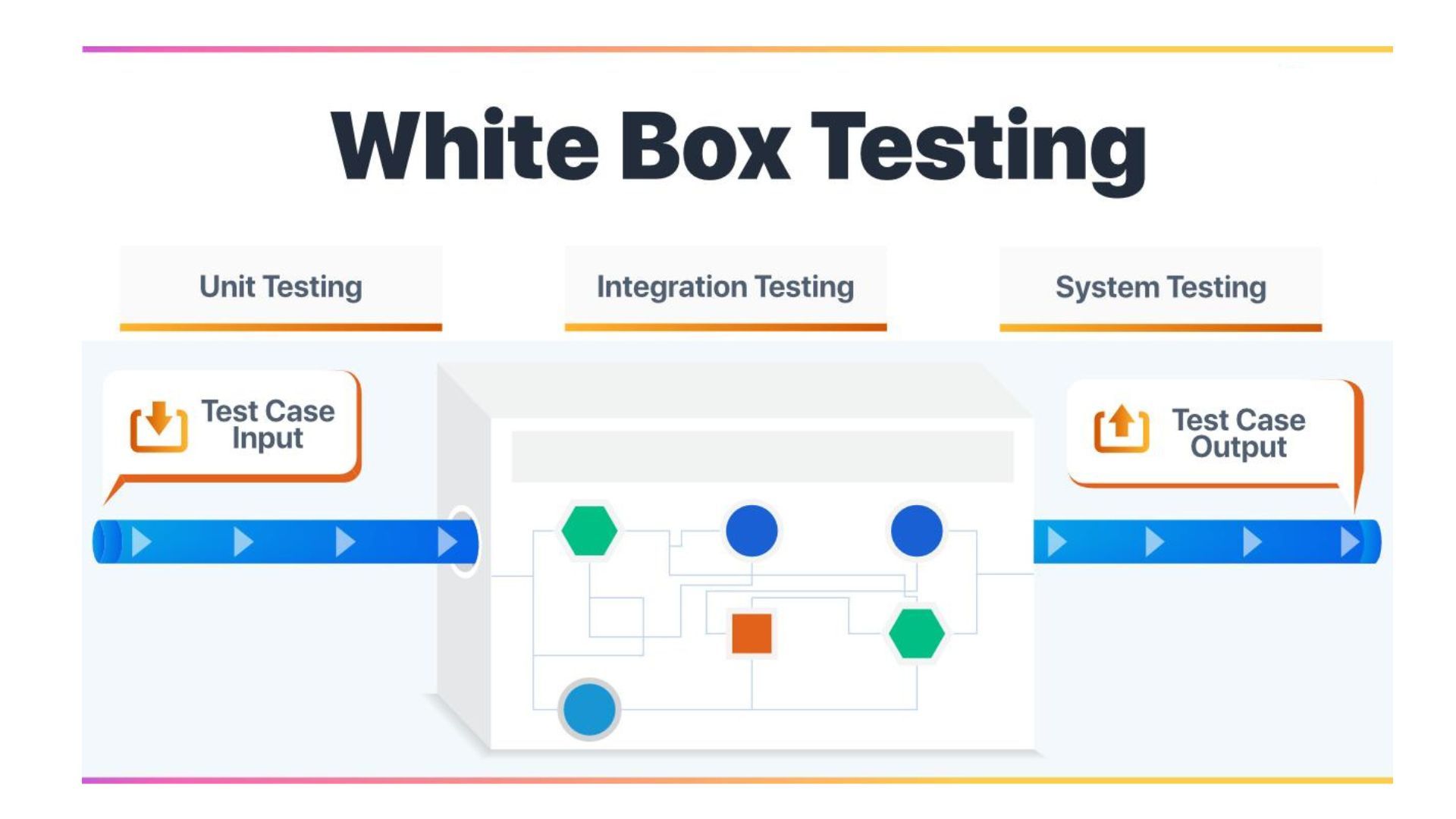Mastering Software Testing: Techniques and Approaches
A Quick Guide to White Box Testing

INTRODUCTION
White box testing is a testing method that examines the internal organization, code, and design of software in order to validate input-output functionality and enhance the design, usability, and security. White box testing is also known as clear box testing, open box testing, transparent box testing, code-based testing, and glass box testing since code is visible to testers during this type of testing.
The Box Testing method of software testing consists of two components. Blackbox testing, its counterpart, involves testing from an outside or end-user perspective. On the other hand, White box testing in software engineering is centered on internal testing and is focused on the inner workings of an application.
Due to the idea of a see-through box, the term "WhiteBox" was adopted. WhiteBox, which stands for "clear box," alludes to the ability to look through the software's exterior ("box"). The "black box" in the phrase "Black Box Testing" stands for the inability to see the inner workings of the program so that only the end-user experience can be tested.
How is White Box Testing carried out?
To make understanding white box testing easier for you, we've broken it down into two simple phases. When evaluating an application using the white box testing method, testers take the following actions:
First Step: Understand the source code.
Second Step: Create test cases and execute.
White Box Testing Methods
Code Coverage analysis is a crucial White box testing technique. Gaps in a Test Case suite are eliminated by Code Coverage analysis. It points out portions of software that a collection of test cases does not put to the test. When holes are found, test cases are made to check the parts of the code that haven't been verified, improving the quality of the software product.
Code coverage analysis can be completed using automated methods. A box tester can make use of the following coverage analysis techniques:
- Statement Coverage: This software engineering testing technique mandates that every potential statement in the code be tested at least once.
- Branch Coverage: This method examines each potential software application path, including if-else and other conditional loops.
In addition to the aforementioned coverage categories, there are countless others, including condition coverage, multiple condition coverage, path coverage, and function coverage. Each method seeks to verify (cover) every component of software code and has its own advantages. You can typically achieve 80–90% code coverage using statement and branch coverage, which is sufficient.
Important WhiteBox testing techniques include the following:
- Statement Coverage
- Decision Coverage
- Branch Coverage
- Condition Coverage
- Multiple Condition Coverage
- Finite State Machine Coverage
- Path Coverage
- Control flow testing
- Data flow testing
White Box Testing Types
The term "white box testing" refers to a variety of testing techniques used to assess the usability of an application, a section of code, or a particular software package. The following are listed:
- Unit testing: Unit testing is frequently the initial testing method used on an application. Each unit or block of code is tested as it is being developed. The programmer essentially performs unit testing. As a software developer, you create a small amount of code, a single function, or an object, test it to ensure it functions, and then move on. Early in the software development lifecycle, unit testing aids in the identification of the majority of bugs. Bugs found in this stage are less expensive and simpler to fix.
- Testing for Memory Leaks: Applications that run slowly often have memory leaks. When you have a software program that runs slowly, you need a QA professional that is skilled at finding memory leaks.
A few testing types, other than those mentioned above, are included in both black-box and white-box testing. Below is a list of them.
- White Box Penetration Testing: In this type of testing, the tester or developer has complete access to the application's source code as well as comprehensive network information, IP addresses involved, and server information. The objective is to attack the code from several points in order to reveal security risks.
- White Box MutationTesting: Mutation testing, often known as "white box" testing, is frequently used to identify the best coding practices to apply while extending a software solution.
Tools for White Box Testing
The best white box testing tools are listed below.
- EclEmma
- NUnit
- PyUnit
- HTMLUnit
- CppUnit
Conclusion
- White box testing can be quite challenging. The application being evaluated has a significant impact on the complexity involved. While bigger programming applications take days, weeks, or even longer to completely test, a small application that executes a single straightforward function can be white-box tested in a matter of minutes.
- A software application should undergo white box testing when it is being developed after it is written, and once more after each modification.
